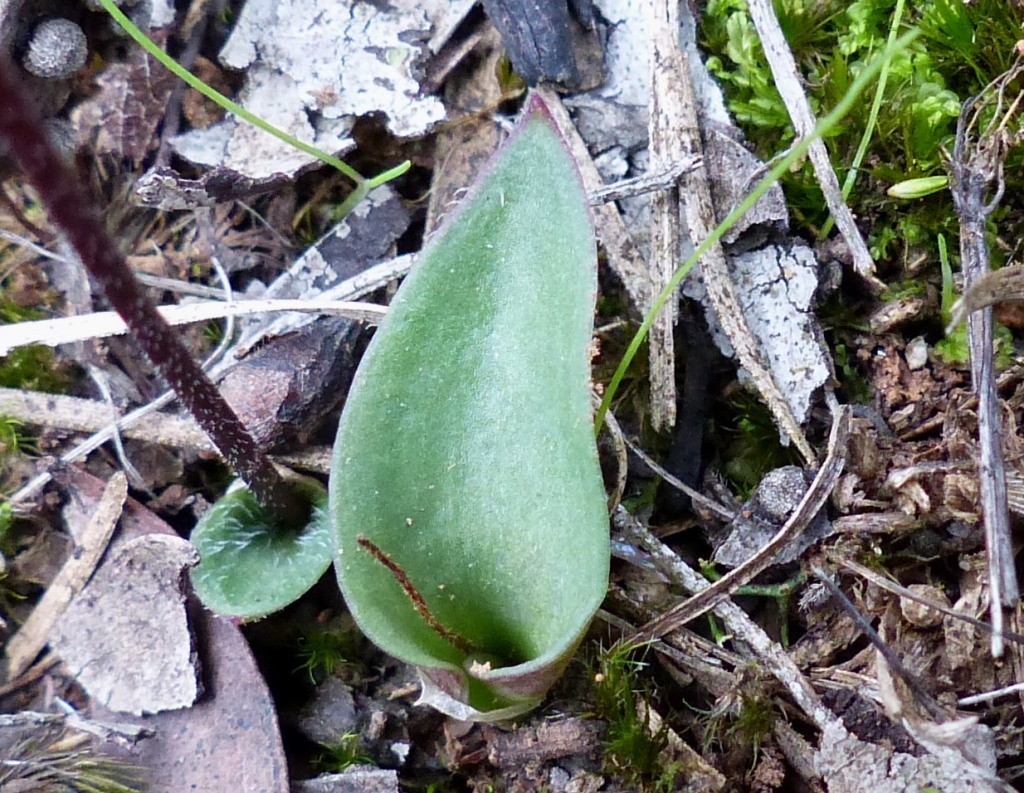Eriochilus cucullatus
(Labill.) Rchb.f. Parson's BandsFlowering plant 5–25 cm tall. Leaf basal, ovate, acute, 10–30 mm long, 5–11 mm wide, usually dull dark green, upper surface slightly rough to distincly verrucose, sometimes also with a few short hairs, incompletely developed at flowering time, subtended by a large hyaline bract. Flowering stem slender, 10–25 cm tall. Flowers usually 1–5, white or pale pink, pedicel (including ovary) 10–15 mm long, sheathed by broad truncate bract; dorsal sepal oblanceolate to spathulate, green or brownish, 6–8 mm long; lateral sepals narrowly elliptic to oblanceolate, with distinct claw, white or pinkish, 10–13 mm long; petals linear, greenish, 5–7 mm long. Labellum white, green or yellowish, with red or pinkish hairs; erect portion with narrow lateral lobes bent towards column; mid-lobe expanded to 2–3 mm wide, ovate to obovate, convex, with erect hairs arranged in small clusters. Flowers Jan.–Jun.
LoM, MuM, Wim, GleP, VVP, VRiv, GipP, OtP, WaP, Gold, CVU, GGr, DunT, NIS, EGL, EGU, WPro, HSF, HNF, OtR, Strz, MonT, VAlp. All states except WA and NT. Excepting the north-west and heavier soils of the Riverina and the volcanic plain, widespread throughout the State, in a wide range of habitats, from near-coastal heaths and woodlands to wet montane vegetation.
Eriochilus magenteus differs in having bright pink to magenta flowers, a glabrous, glossy leaf and smaller lateral lobes on the labellum. In addition E. magenteus favours higher altitude montane and alpine habitats.
Entwisle, T.J. (1994). Orchidaceae. In: Walsh, N.G.; Entwisle, T.J., Flora of Victoria Vol. 2, Ferns and Allied Plants, Conifers and Monocotyledons, pp. 740–901. Inkata Press, Melbourne.
 Spinning
Spinning


